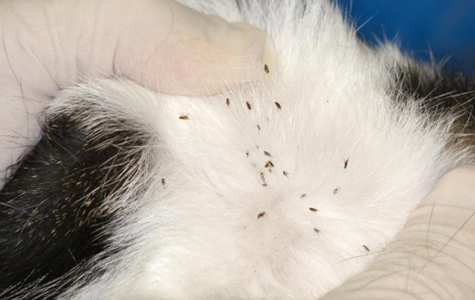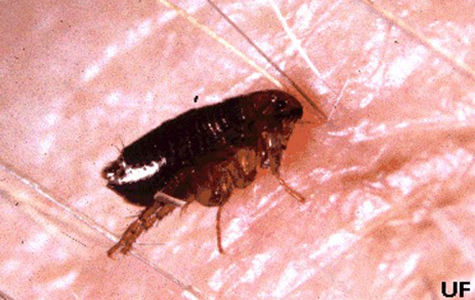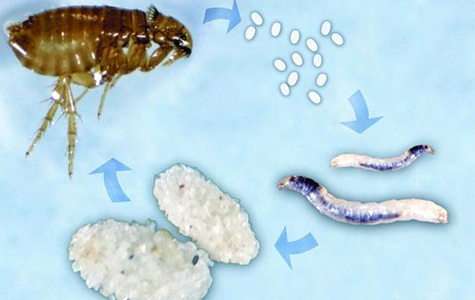How to Get Rid of Fleas
It’s safe to say that no one likes pests invading their home…especially if they can spread diseases or even bite you. One type of pest that is extremely invasive are fleas. They more commonly make their way into homes via pets and can become very difficult to control and eliminate. Some can spread diseases and are known to feed on animals and sometimes humans.
What are fleas?
Fleas are a small, flightless parasite that feed on the blood of various warm-blooded animals. They feed on blood in order to reproduce. As we mentioned before, depending on the species of the flea, some can transmit diseases to their host. They are the most common transmitter of the rare bubonic plague and murine typhus.
Pet owners are most at risk for flea infestations. However, these pests can be brought onto a property by wild animals such as raccoons and skunks and eventually make their way into your home by you – even if you don’t have a pet.
The most common type of flea is the cat flea. It often feasts on cats, dogs and humans. There are also varied allergic responses to their bites, depending on the sensitivity of the host.
What do fleas look like?
These pests are extremely small and sometimes hard to see. They are only 1/12 to 1/6 of an inch long. They are typically a dark reddish-brown and flattened side to side. Fleas do not have wings but they do have the ability to jump long distances. This pest can typically be seen with the naked eye. Adult are equipped with bristles that point backward, which allows them to move swiftly through fur, hair and feathers.


Habitat
Before coming inside a home via a host, fleas are typically found outdoors in moist, shady and cool places such as shrubs, leaves, trees and sometimes tall grass. They will typically live in these areas until they find a food source. They will hitch a ride and feed on the host.
Interesting Facts
- An estimated $2.8 billion is spent annually on flea-related veterinarian bills
- $1.6 billion is spent annually for treatment through groomers and $4 billion for over the counter treatments
- For professional flea control, it’s estimated that $348 million is spent annually
- They typically lay their eggs on animals but since the eggs have a dry, smooth surface, often times they fall out of the animal’s hair
- Flea eggs are white and nearly impossible to see against carpet, bedding and grass
- The life cycle of this pest is between 30 – 75 days
- The cat flea is the most common type of this pest in the United States while the dog flea can rarely be found
- There are over 2,000 species of this pest
Why are fleas so hard to control?

Fleas are hard to control because once they find a host, they will either lay eggs on an animal or in your home. They lay eggs in carpeting, bedding and furniture. Since the eggs and larvae are nearly impossible to see with the naked eye, you often won’t know that you’ll soon have a flea infestation.
Flea reproduction is quick. It first begins with the adult feeding on a food source (such as a cat, dog or human).
Then the adult lays one egg every hour. Within two days the egg becomes.
In 5 – 15 days, the larvae becomes a pupae. The flea can be in the pupal stage anywhere from one week to several months before becoming an adult. Then the cycle continues.
To the left is a graphic of the flea life cycle. Clockwise from top left: adult, eggs, larvae and pupae. Graphic courtesy of University of Florida.
How can I get rid of fleas?
The first step in getting rid of this pest is being able to detect the problem early on. This is quite simple if you have a pet in your home because you can observe their behavior. If they are scratching themselves more than normal, then it’s a sign you should inspect them for fleas.
If you do not have a pet in your home, another way you can determine if you have fleas is if you have bites on your body which usually causes your skin to itch.
The most effective way to get rid of them inside your home is to call a professional. They will apply a treatment that will kill the adults, eggs, larvae and pupae. After a treatment is complete, it is recommended to frequently vacuum carpet and wash bedding and blankets.
It is possible to control and reduce populations in your lawn and landscape. A professional can apply a treatment that will destroy flea larvae by killing it before it’s able to turn into an adult.
There are simple maintenance things you can do around your lawn and landscape to help prevent ideal habitats for these pests. They include:
- Eliminate debris
- Raking of leaves
- Pruning and trimming trees and shrubs
- Consistently mowing the grass
Click here to learn more about how to prevent fleas from your furry animals
At Massey Services, we offer interior flea treatments and exterior preventative services. If you think you have a flea infestation, call us at 888-262-7739 or fill out the free inspection form below.